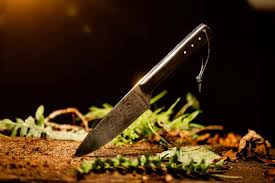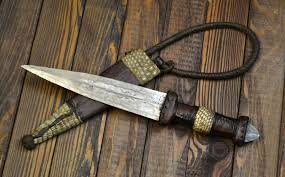Table of Contents
Introduction:
The knife , one of humanity’s oldest and most versatile tools, has played a significant role in our evolution and cultural development. From its humble origins as a sharpened stone to the intricate blades crafted by modern artisans, the knife has undergone a remarkable evolution, serving various practical, ceremonial, and symbolic purposes. In this comprehensive exploration, we delve into the rich history, diverse uses, and enduring significance of the across different cultures and contexts.
The Origins of the Knife

The earliest evidence of knives dates back to the Stone Age, where our ancestors crafted rudimentary blades from flint, obsidian, and other materials. These early knives served essential functions such as hunting, food preparation, and crafting other tools. Over time, as human societies advanced, so did the technology and craftsmanship behind-making, leading to the development of more sophisticated designs and materials.
The Knife as a Tool
Throughout history, the has been indispensable for various practical tasks, ranging from everyday chores to specialized professions. Farmers use knives for harvesting crops and trimming plants, while chefs rely on them for slicing, dicing, and carving ingredients in the culinary arts. Similarly, craftsmen, artisans, and outdoor enthusiasts depend on knives for woodworking, sculpting, survival, and exploration. The nife’s utility and versatility make it an essential tool across diverse industries and disciplines.
The Knife in Culture and Ceremony
Beyond its practical applications, the knfe holds significant cultural and ceremonial significance in many societies. In some cultures, knives are revered as sacred objects imbued with spiritual power and symbolism. Ritualistic knives are used in religious ceremonies, rites of passage, and cultural traditions to symbolize strength, protection, and initiation. Additionally, ornate ceremonial knives are crafted as symbols of status, honor, and craftsmanship, reflecting the cultural values and aesthetics of their respective societies.
The Knife as a Symbol
The symbolism extends beyond its utilitarian and ceremonial roles to encompass broader themes such as power, danger, and transformation. In literature, art, and mythology, the often serves as a potent symbol of conflict, betrayal, and change. Think of the iconic dagger in Shakespeare’s “Macbeth,” representing ambition and treachery, or the sacrificial nife in religious texts symbolizing devotion and transcendence. Moreover, the kfe has been appropriated by various subcultures and countercultural movements as a symbol of rebellion, autonomy, and defiance against authority.

The Future of the Knife
As we enter the digital age, the continues to adapt and evolve alongside new technologies and societal trends. While traditional craftsmanship and artisanal techniques remain valued and cherished, innovations in materials, design, and manufacturing processes are shaping the future of ife-making. From high-tech materials like carbon fiber and titanium to innovative blade shapes and ergonomic handles, the nife industry is experiencing a renaissance of creativity and innovation. Moreover, the rise of digital fabrication technologies such as 3D printing and CNC machining offers new possibilities for customization and personalization in nife design.
Conclusion:
In conclusion, the knife stands as a testament to human ingenuity, creativity, and cultural evolution. From its humble origins as a primitive tool to its status as a symbol of power, tradition, and rebellion, the nife has left an indelible mark on human history and consciousness. As we continue to explore new frontiers in technology, craftsmanship, and cultural expression, the knife remains a timeless icon that bridges the past, present, and future, reflecting the enduring complexity and resilience of the human spirit.
For More Information Please Visit These Websites Mindmeister